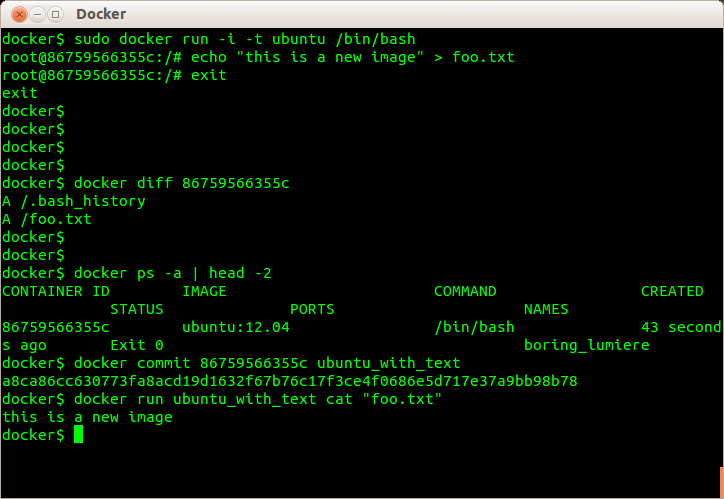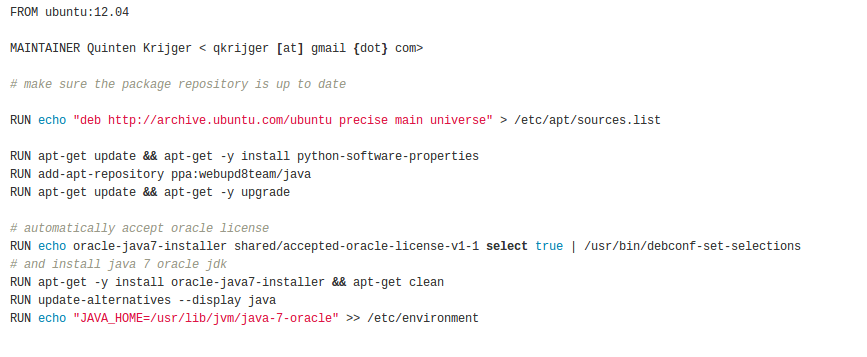DOCKER

THE HYPE

DOCKER HISTORY
A dotCloud (PAAS provider) project
Initial commit January 18, 2013
Docker 0.1.0 released March 25, 2013
7,800+ github stars, 1,000+ forks
dotCloud pivots to docker inc. October 29, 2013
WHAT IS DOCKER?
LIGHTWEIGHT
Portable
Raspberry pi support.
Possible future support for other operating systems (Solaris, OSX, Windows?)
Self-sufficient
- Minimal Base OS
- Libraries and frameworks
- Application code
DOCKER ARCHITECTURE

History of virtualization

HARDWARE Virtualization
- 1966-1972 IBM CP/CMS
- 1989 Insignia SoftPC
- 1997 Connectix VirtualPC
- 1999 VMWare Workstation
- 199x-2002 Xen
- 2001 IBM AIX LPAR
-
2006 Amazon EC2
- 2007 Sun Logical Domains
- 2007 Linux KVM
- 2007 InnoTek VirtualBox
- 2008 MS Hyper-V
"I once heard that hypervisors are the living proof of operating system's incompetence"
Glauber Costa/LinuxCon 2012
PROCESS VIRTUALIZATION
- 1979-1982 UNIX chroot
- 1998 FreeBSD jail
- 2001 Parallels Virtuozzo
- 2001 Linux-VServer
- 2005 Solaris Containers
- 2005 OpenVZ
- 2008 Linux LXC
-
2007+ PAAS:
Heroku, Joyent, CloudFoundry - 2013 Docker
RUNNING DOCKER
PULLING an image
RUNNING CONTAINERS
Performance
less than 5% penalty
COMMITTING CHANGES
IMAGES ARE A DAG


IMMUTABLE SERVERS
With all this virtualization, why do we still manage virtual servers like mainframes?
Modern systems have a ridiculous amount of configuration state (packages, settings, etc.).
We try to manage state with tools like CFEngine, Chef, & Puppet (or via massive amounts of labor).
The current immutable server practice in is to use Chef/Puppet to build OS images and deploy them to a cloud.
IMMUTABLE SERVERS
Physical server lifetime is measured in years.
A container's lifetime can only be a few seconds.
Treat containers like a build artifact.
If you need to make changes, build a new container.
Dockerfiles
 Create a Java 1.7 container
Create a Java 1.7 containerDockerfiles
Build a Tomcat container from our Java layer

SUMMARY
- Easy to build, run & share containers
- Rapidly expanding ecosystem
- Better performance vs. VMs
- Layered filesystem gives us git-like control of images.
- Reduces complexity of system builds
THE FUTURE IS EXCITING
New operational models:
- Automated routing
- Distributed consensus (Paxos, Raft)
- Service Discovery
- Software Defined Networking
- Distributed scheduling (Mesos)
ONE LAST THING

today:


Image credits
SpongeBob: http://i908.photobucket.com/albums/ac281/Misao_bucket/spongebob_imagination_by_kssael_display.png
DOCKER
By Steven Borrelli
DOCKER
- 6,354
